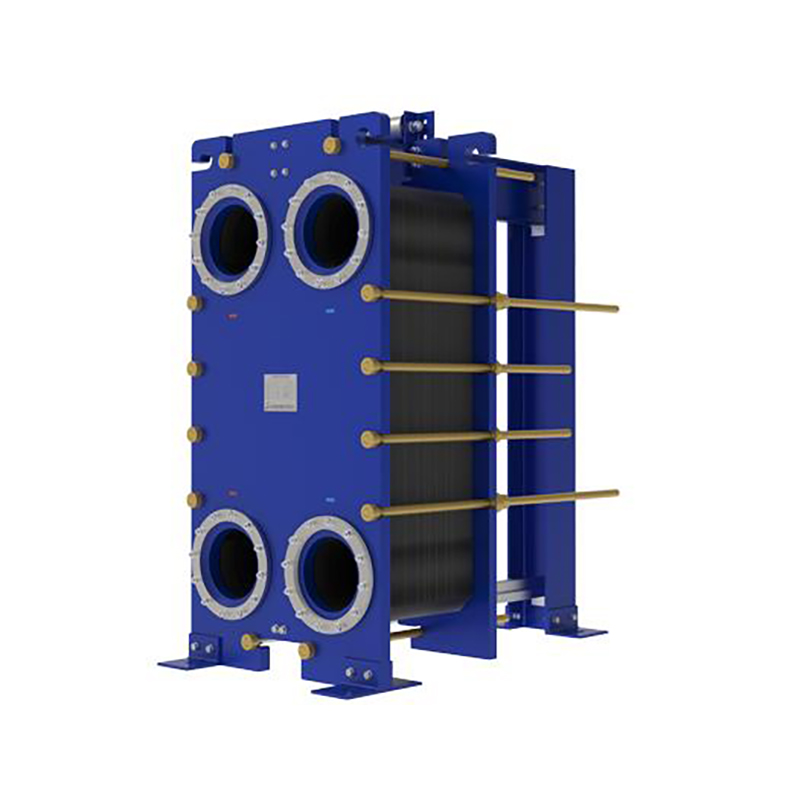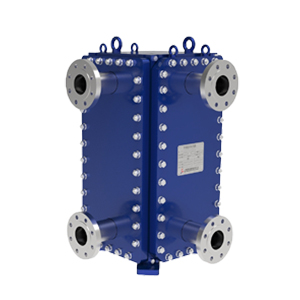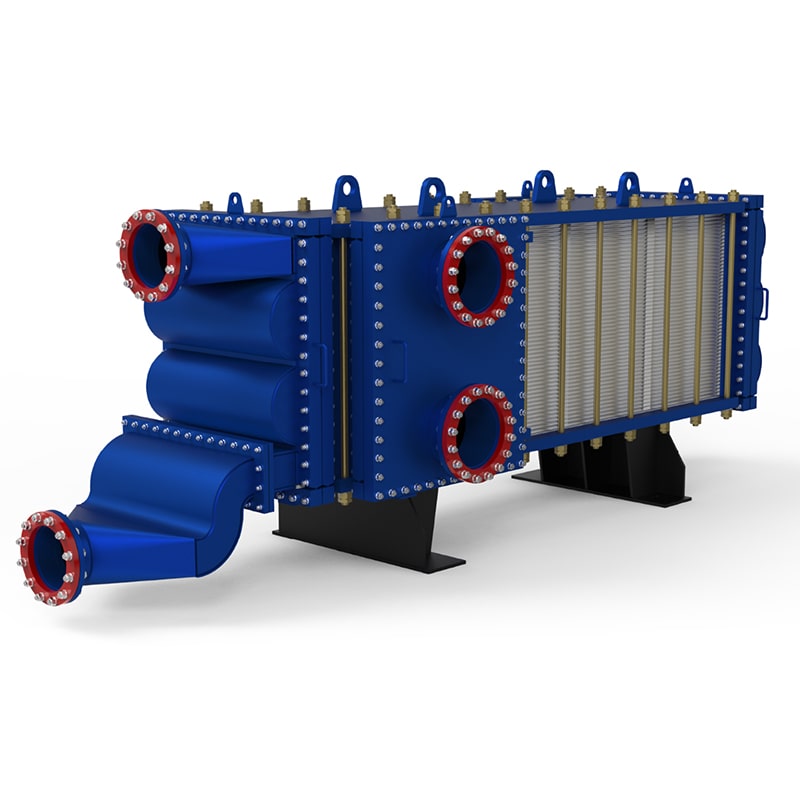5 key roles of plate heat exchanger gaskets.
Plate heat exchanger gaskets perform 5 key roles: ...
More
A corrugated heat exchanger is an advanced type of heat transfer equipment characterized by its plate surfaces that are embossed with a corrugated, wavy pattern. This design is primarily implemented in plate heat exchangers (PHEs), where the corrugations on the metal plates are a critical feature distinguishing them from simpler, flat-plate designs. These units are engineered to facilitate efficient thermal exchange between two or more fluids—be they liquids, gases, or a combination thereof—while keeping them completely separate. The materials of construction are typically corrosion-resistant alloys such as 316 stainless steel, titanium, or Hastelloy, chosen based on the application's specific pressure, temperature, and fluid compatibility requirements. The corrugated pattern is not merely a structural element; it is a performance-enhancing feature that drastically increases the surface area available for heat transfer within a compact footprint. This makes them exceptionally space-efficient compared to traditional shell and tube heat exchangers. They are ubiquitous across a vast spectrum of industries, including chemical processing, pharmaceuticals, power generation, HVAC, food and beverage production, and marine engineering. Their primary value proposition lies in their superior thermal efficiency, compactness, and adaptability, offering a modern solution for heating, cooling, heat recovery, and condensation duties where maximizing energy efficiency and minimizing operational costs are paramount.
The efficacy of a corrugated plate heat exchanger is a direct result of its meticulously engineered design. The corrugations on the plates serve multiple simultaneous functions. Firstly, they induce a high degree of turbulence in the flowing fluids. This turbulent flow is crucial as it disrupts the stagnant boundary layer that naturally forms at the fluid-plate interface, a layer that acts as an insulator and impedes heat transfer. By breaking up this layer, the corrugations significantly enhance the convective heat transfer coefficient, leading to much more efficient heating or cooling. Industry data and manufacturer specifications consistently show that corrugated plate heat exchangers can achieve heat transfer coefficients that are three to five times higher than those possible with conventional shell and tube exchangers of a comparable size. Secondly, the pattern provides mechanical support to the thin plates, enabling them to withstand higher pressure differentials between the fluid channels. The specific geometry of the corrugations—such as the chevron angle—can be optimized during the design phase for specific applications; a higher angle favors heat transfer, while a lower angle favors pressure handling. Furthermore, the compact nature of a PHE, made possible by stacking numerous corrugated plates together, means that a large heat transfer surface area is packed into a very small volume, often resulting in a unit that requires 50% to 80% less floor space than a shell and tube unit delivering the same duty. This design also allows for easy scalability; capacity can be increased or decreased by simply adding or removing plates from the frame.
The operational principle of a corrugated heat exchanger is based on indirect, efficient heat transfer between two fluids across a corrugated metal plate. The process begins as the two fluids, which must be kept separate to prevent mixing, are channeled through the alternating gaps between the stacked plates within the exchanger's frame. Specifically, one fluid flows through the gaps on one side of each plate, while the second fluid flows through the gaps on the opposite side. The flow configuration is typically counter-current, where the hot and cold fluids flow in opposite directions. This counter-flow arrangement is highly efficient as it maintains a more consistent and favorable temperature difference (the driving force for heat transfer) across the entire length of the exchanger compared to a parallel-flow system. The close proximity of the hot and cold streams, separated only by the thin metal plate, allows for rapid conductive heat transfer through the plate material. The corrugated pattern of the plates is the key to its high performance. As the fluids are forced through the complex, narrow paths created by the corrugations, their flow becomes highly turbulent. This intense turbulence ensures that the core of the fluid is continuously mixed with the fluid near the plate wall, efficiently bringing more thermal energy to or from the surface. Consequently, thermal energy is transferred from the hotter fluid, through the plate, and into the cooler fluid without any physical contact or mixing between them. The fluids then exit the exchanger through their respective outlet ports at their new, controlled temperatures, having achieved the desired heating or cooling effect.
The detailed working mechanism leverages fluid dynamics and thermal conductivity. The corrugations create a network of contact points between adjacent plates, forming sealed channels for the fluids. The pattern dictates the hydraulic and thermal performance. For instance, common chevron-type corrugations have an included angle that can be optimized; a larger angle (e.g., 60° vs 30°) promotes greater turbulence and higher heat transfer rates but also results in a higher pressure drop through the unit. Real-world operational data from systems like district heating networks show that these exchangers can achieve approach temperatures (the difference between the outlet temperature of one fluid and the inlet temperature of the other) as low as 1-2°C, highlighting their exceptional efficiency. In a typical installation for recovering waste heat, a corrugated PHE might transfer over 90% of the thermal energy from a hot waste stream to a cooler process stream, dramatically reducing the energy required from primary heaters. The efficiency is quantifiable. Compared to a shell and tube exchanger, a corrugated plate unit can achieve the same heat transfer duty with a approach temperature that is 5 to 10 times smaller, according to engineering performance comparisons. This translates directly into energy savings, with documented case studies in industrial plants reporting energy cost reductions of 20% or more after retrofitting with corrugated plate heat exchangers for duties like effluent cooling or pasteurization. Their ability to handle high-fouling fluids is also a function of their operation; the high turbulence has a self-cleaning effect, scrubbing the plate surfaces and mitigating the buildup of scale or other deposits, which helps maintain high efficiency over longer operational cycles between cleanings.
Select the most popular foreign trade service products to meet your diverse needs
Learn more about the dynamics and professional knowledge of the foreign trade industry

Plate heat exchanger gaskets perform 5 key roles: ...
More
A gasket in heat exchanger seals surfaces, blocks ...
MoreAPI 662 defines standards for plate heat exchanger...
More
You can see clear differences between welded block...
More
Plate heat exchangers are becoming more popular be...
More
A heat exchanger plate is vital for industrial eff...
MoreSelect the most popular foreign trade service products to meet your diverse needs
Explore more content related to foreign trade services

User Comments
Service Experience Sharing from Real Customers
David Chen
Process EngineerThe corrugated design of this heat exchanger significantly boosts heat transfer efficiency. We've integrated it into our chemical processing line and seen a 15% reduction in energy consumption. The compact size is a major advantage for our space-constrained facility.
Sarah Wilkinson
HVAC Project ManagerOutstanding performance in our commercial HVAC systems. The corrugated tubes handle fouling much better than traditional smooth-tube exchangers, drastically reducing maintenance downtime and costs. A reliable and highly efficient component.
Michael Rodriguez
Plant SuperintendentExtremely durable construction. It has been running flawlessly in our refinery for over 18 months, handling high pressures and temperatures with no signs of degradation. The only reason it's not a 5 is the longer lead time for delivery.
Emily Foster
Research & Development LeadA game-changer for our waste heat recovery applications. The enhanced turbulence from the corrugation allows us to extract more energy from low-grade heat sources we previously couldn't utilize effectively. The engineering and build quality are top-notch.